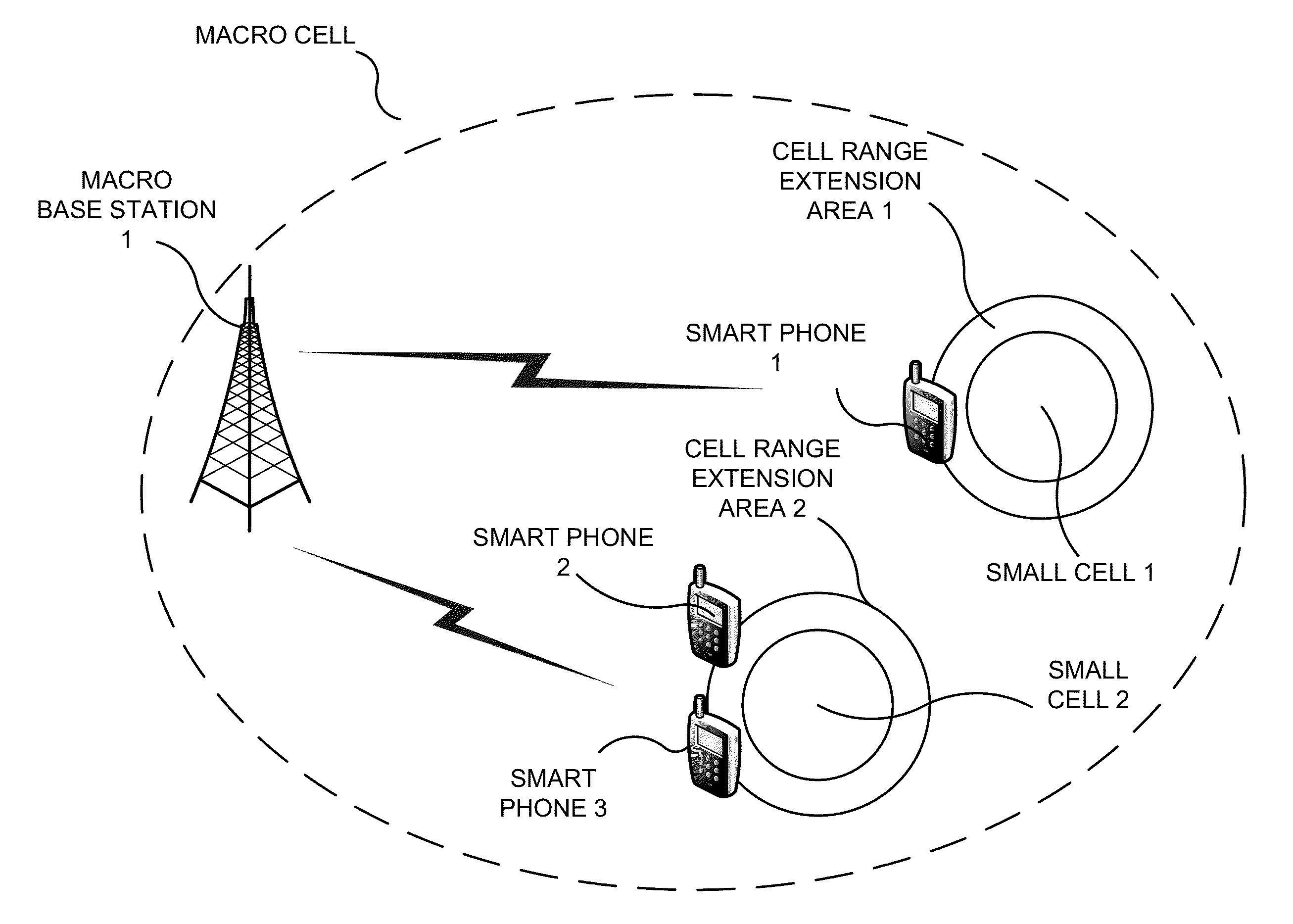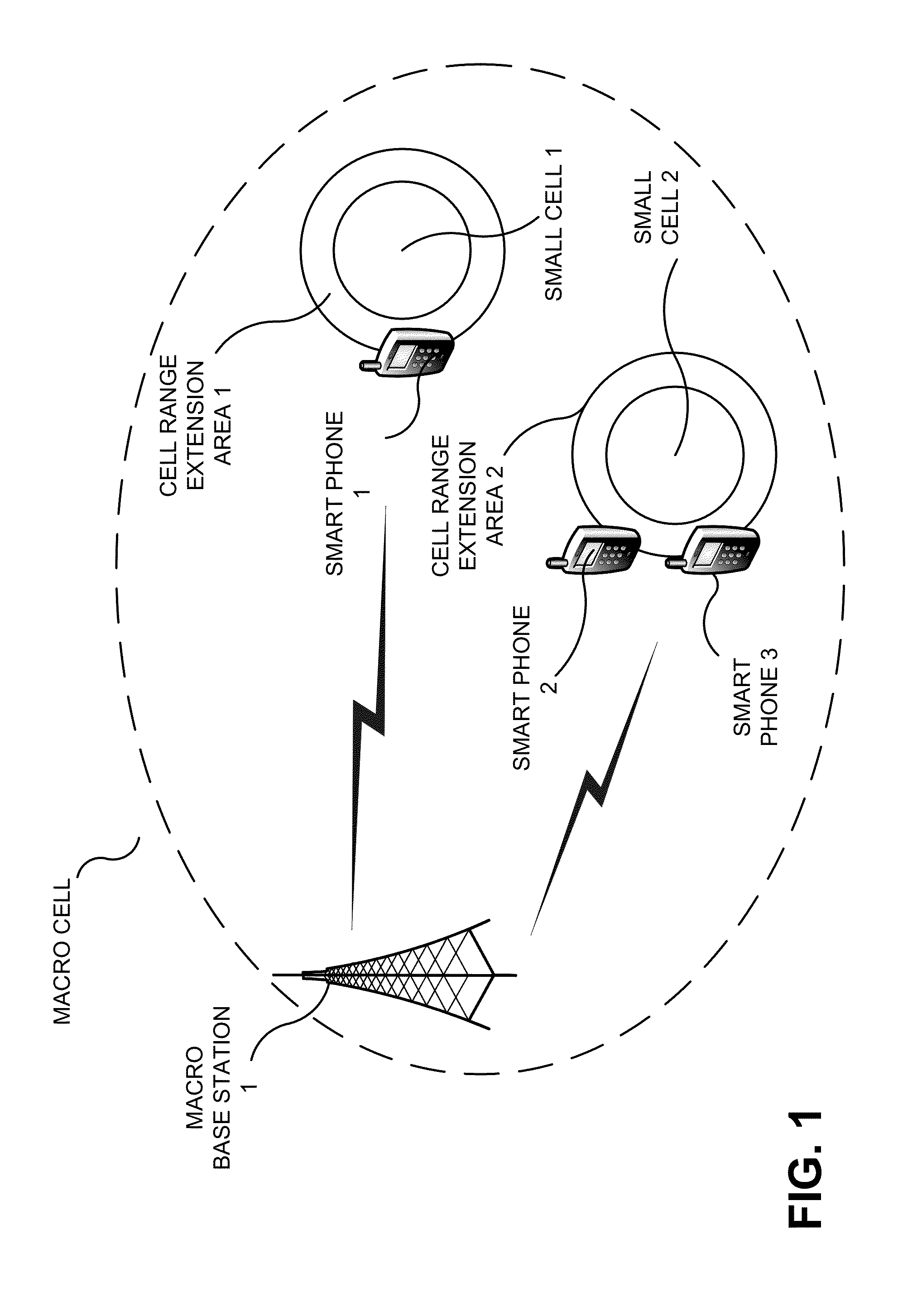Interference management
a technology of interference management and management, applied in the field of interference management, can solve the problems of reducing the capacity of the macro base station to provide service, interfering between the small cells,
- Summary
- Abstract
- Description
- Claims
- Application Information
AI Technical Summary
Benefits of technology
Problems solved by technology
Method used
Image
Examples
Embodiment Construction
[0010]The following detailed description refers to the accompanying drawings. The same reference numbers in different drawings may identify the same or similar elements.
[0011]Systems and / or methods, described herein, may allow a carrier (e.g., a mobile network operator, a wireless service provider, a cellular company, etc.) to deploy one or more small cells (e.g., a micro cell, a pico cell, a femto cell, or the like) in a cellular network by optimizing an almost blank subframe ratio and / or a cell range extension value so that there is minimal interference between the small cells and a macro base station without reducing the capacity of the macro base station. For example, a macro base station may provide service to one or more user devices (e.g., a smart phone) in a particular area within the network. Within the particular area of the network, wireless access points may be deployed to segments within the area because these segments may not be receiving enough capacity from the macro...
PUM
 Login to View More
Login to View More Abstract
Description
Claims
Application Information
 Login to View More
Login to View More - R&D
- Intellectual Property
- Life Sciences
- Materials
- Tech Scout
- Unparalleled Data Quality
- Higher Quality Content
- 60% Fewer Hallucinations
Browse by: Latest US Patents, China's latest patents, Technical Efficacy Thesaurus, Application Domain, Technology Topic, Popular Technical Reports.
© 2025 PatSnap. All rights reserved.Legal|Privacy policy|Modern Slavery Act Transparency Statement|Sitemap|About US| Contact US: help@patsnap.com



